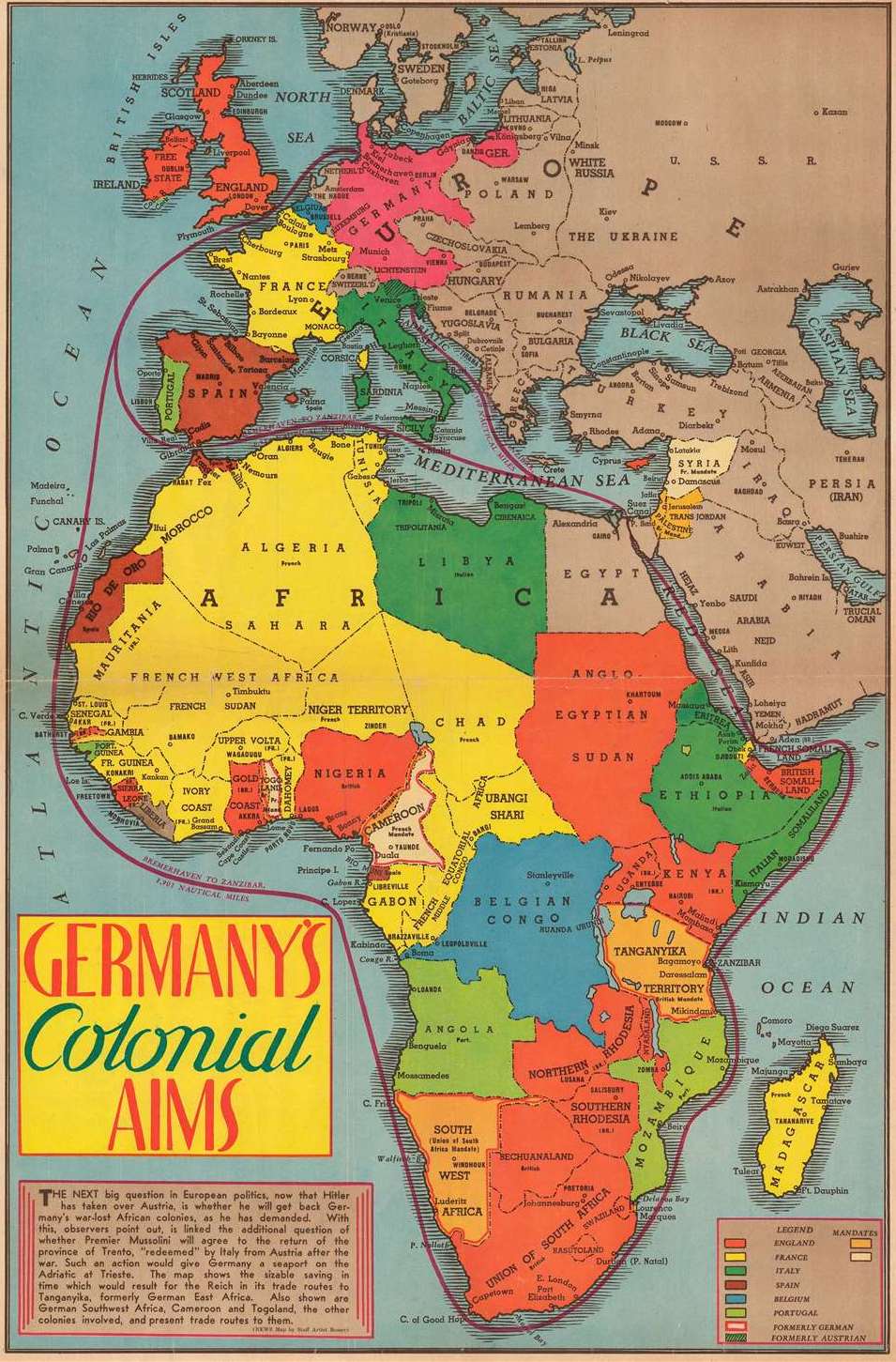Nazi plans for dividing and 'improving' Africa during World War II examined
LAWRENCE — While Germany’s 1939 invasion of Poland marks the official start of World War II, one of the major on-ramps to war was the Italian invasion of Ethiopia four years earlier.

“This introduced fascism’s threat to European peace and order by threatening the colonial balance of power in Africa,” said Andrew Denning, an associate professor of history at the University of Kansas.
How the Axis powers intended for Africa to factor into this global conflict — and how those plans fell apart — is the subject of his latest article.
“Unscrambling Africa: From Eurafrican Technopolitics to the Fascist New Order” examines how German technocrats created revisionist plans to “unscramble” Africa in the 1930s. Bureaucrats and colonial lobbyists in Nazi Germany helped produce such projects but also oriented them toward the realization of fascist imperial goals. Although these blueprints w

ere never implemented, they indicate how interwar empire-building in Africa connected Nazi Germany to other powers in Europe. It appears in the Journal of Modern History.
“It’s important we study plans that never come to be,” Denning said. “There are lots of things we can learn about the way societies function — and the ideologies and mentalities that operate within them — if we look at the kinds of utopias they imagine. For all of the Nazi movement’s dystopian outcomes, we have to recognize that many Germans thought they were constructing utopia.”
These plans were elaborated when the vast majority of the African continent was controlled by European powers, a relic of the global competition of the 1880s termed the “scramble for Africa.”
“The scramble for Africa produced a checkerboard of different European colonies. What Nazi and Italian Fascist officials wanted was not necessarily to conquer all of these areas but redistribute them to better represent the balance of power in the 1930s. This would obviously leave Germany and Italy in possession of much larger territories. But also, interestingly, they believed that this unscrambling would lead to much more European cooperation,” Denning said.
Despite Germany’s descent into fascism, African planning provided an opportunity for those skeptical of the regime to still pursue their work. Scientists, engineers, geographers, chemists and agronomists willingly took part in this venture in pursuit of what they often saw as rational forms of colonial development, Denning said.
Those plans included building continental-scale infrastructures such as roads, railways and air connections. But, not surprisingly given the Nazis’ agenda, these experts gave scant thought to the effects of such transformations on the lives of 130 million Africans, according to Denning.
“German planners occasionally mentioned African residents as needed laborers for their grandiose projects but rarely described how they might be affected by this, let alone how these developments might benefit Africans. That’s where we really see the extremity of some of these plans,” he said.
While researching this topic, Denning said he was most surprised to learn how close Nazi ideas about ruling Africa were to other nations.
“German plans to ground colonialism in infrastructure development were quite similar to those produced not only in Italy by the fascists at the same time, but by the British, French and Belgians of the 1920s and ’30s as well,” he said.
Like planners in those other European nations, those in the Third Reich aspired to fuse Europe and Africa into “Eurafrica.” They wanted to move away from the old methods of merely extracting resources from the continent and instead establish it as a place where reciprocity could exist to the mutual benefit of both regions, although the scale always tipped toward Europe.
He said, “This is an area in which their ideas are very much inspired by, in conversation with and often running in parallel to what their eventual enemies in World War II thought and did.”
A KU faculty member since 2015, Denning’s expertise is in 20th century European history. He is also the recently appointed director of KU’s Museum Studies Program. His latest book, “The Interwar World” (Routledge, 2023), focuses on the turbulent period of 1918-1939.
If the Axis powers had won the war, what would Africa look like today?
“Although historians are loath to engage in counterfactual history, the idea was that the Germans and their Italian allies would operate Africa collaboratively to develop massive, continent-spanning infrastructures not stopped or divided by territorial borders,” Denning said.
“They were thinking about a way of ruling in Africa that would benefit Europeans of all kinds of nationalities … but certainly not benefit Africans.”
Top image: A 1938 Romer Map of Colonial Africa highlights Germany’s desire to regain its African colonies. It was published by the New York Sunday News on May 1, 1938.